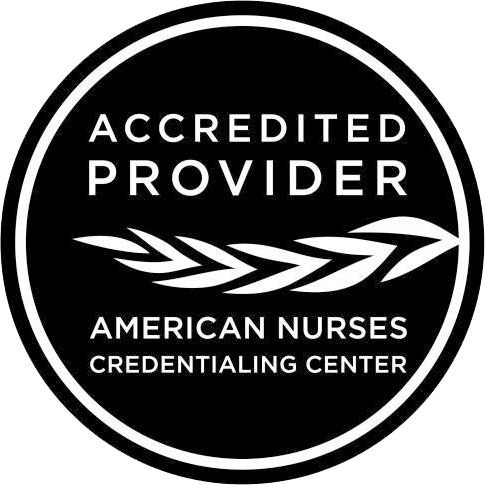
Casting a Wider Net, Use of Non-pharmacological & Complementary Treatments for Pain Management
-
Register
- User - $27.50
At least 116 million U.S. adults—more than the number affected by heart disease, diabetes, and cancer combined—suffer from common chronic pain conditions. Across the life span, pain—acute and chronic—is one of the most frequent reasons for clinician visits, among the most common reasons for taking medications, and a major cause of work disability. The over reliance on pharmacotherapies alone, in particular the use of chronic opioids, in recent years has been seen as a highly ineffective way of managing chronic pain. The HHS Pain Management Best Practices Inter-Agency Task Force in 2019 released a report for best practice in the management of chronic and acute pain, highlighting the use of a multimodal treatment strategy for improved outcomes.
Healthcare Providers need the education, resources and tools to engage and effectively manage their patients with chronic pain. In this up-to-date review, we will discuss the most practical, evidenced based, possibly overlooked non-pharmacological modalities that clinicians can use either as standalone agents or in a combined multimodal treatment approach for the best possible outcomes in managing patients with chronic pain conditions.
Credits: 1.00 contact hours; 0 are pharmacology
Expiration Date: December 31, 2024
$27.50
LEARNING OBJECTIVES
After taking part in this educational activity, participants should be better able to:
-Describe the role of nonpharmacologic approaches in the multimodal management of pain.
-Explore the types of pain that would be responsive to these various approaches
-State two treatment options available for nonpharmacologic management of chronic pain

Theresa Mallick-Searle, MS, RN-BC, ANP-BC
Nurse Practioner
Standford Health Care
Theresa is an Adult Nurse Practitioner with over 25 years’ experience at Stanford Health Care in Palo Alto, California. She received her graduate degree from University of California, San Francisco.
Her current clinical practice within the Division of Pain Medicine, focuses primarily on evaluation and treatment of individuals suffering from acute and chronic pain conditions in both the acute care and outpatient settings.
Theresa is a nationally recognized clinician, speaker, author and thought leader in the field of pain management. Amongst her numerous honors and awards, the two that stand out as the most treasured were awarded by peer nomination, Nurse Practitioner of the Year (Pain Medicine) – Point of Care Network in 2019 & 2021, and Advanced Practice Provider of the Year – Stanford Health Care in 2015.
CE INFORMATION
Obtain Your Credits
To earn credits for this activity, navigate to the Content(s) tab and complete all course components in the following order: 1) watch the course presentation; 2) complete the course evaluation; 3) pass the post-test with a score of 2/3 (66.7%) or higher. You may retake the post-test until a passing score is achieved, at which point you will be able to view/print a copy of your certificate of completion. This online certificate will also be saved within your profile 'My Dashboard' -> 'Transcript/Certificates Earned' for future access.
Designation Statement
NPACE designates this educational activity for a maximum of 1.0 contact hours, of which 0 is pharmacology credit. Participants should claim only credit commensurate with the extent of their participation in the activity.
Accreditation Statement
Nurse Practitioner Associates for Continuing Education (NPACE) is accredited as a provider of nursing continuing professional development by the American Nurses Credentialing Center’s Commission on Accreditation (ANCC).
In addition to ANCC, NPACE is approved as a provider of continuing education in nursing by: the California Board of Registered Nursing, Provider Number CEP8720 and Florida CE Broker #50-1476.
DISCLOSURES
Faculty
Contributing faculty, Theresa Mallick-Searle, MS, RN-BC, ANP-BC have disclosed no relevant financial relationships.
Planners
All planners and contributors involved in this educational activity have disclosed no relevant financial relationships.
Disclaimer
The material presented in this continuing education program is being made available for educational purposes only and is not intended to represent the best or only methods, medications and/or guidelines appropriate for the medical situation discussed. Rather the material is intended to present an approach, view, statement, or opinion of the presenter(s), which may be helpful, or of interest to other practitioners and should not be used by clinicians without the evaluation of their patient’s conditions and possible contraindications on dangers in use, review of any applicable manufacturer’s product information, and comparison with recommendations of other authorities. NPACE disclaims any liability, loss, injury, or damage incurred as a consequence, directly or indirectly, of the use and application of any information given in a presentation.
Disclosure of Unlabeled Use
This educational activity may mention the uses of products that are not approved by the FDA for the indication(s) being discussed. The presenter(s) are instructed to notify participants when they are discussing unapproved uses or investigational agents. The opinions related to unapproved uses of products are solely those of the presenter(s) and are not endorsed or recommended by NPACE. Please refer to the official prescribing information for each product for discussion of approved indications, contraindications, and warnings.
Commercial Support
There is no commercial support for this activity.

